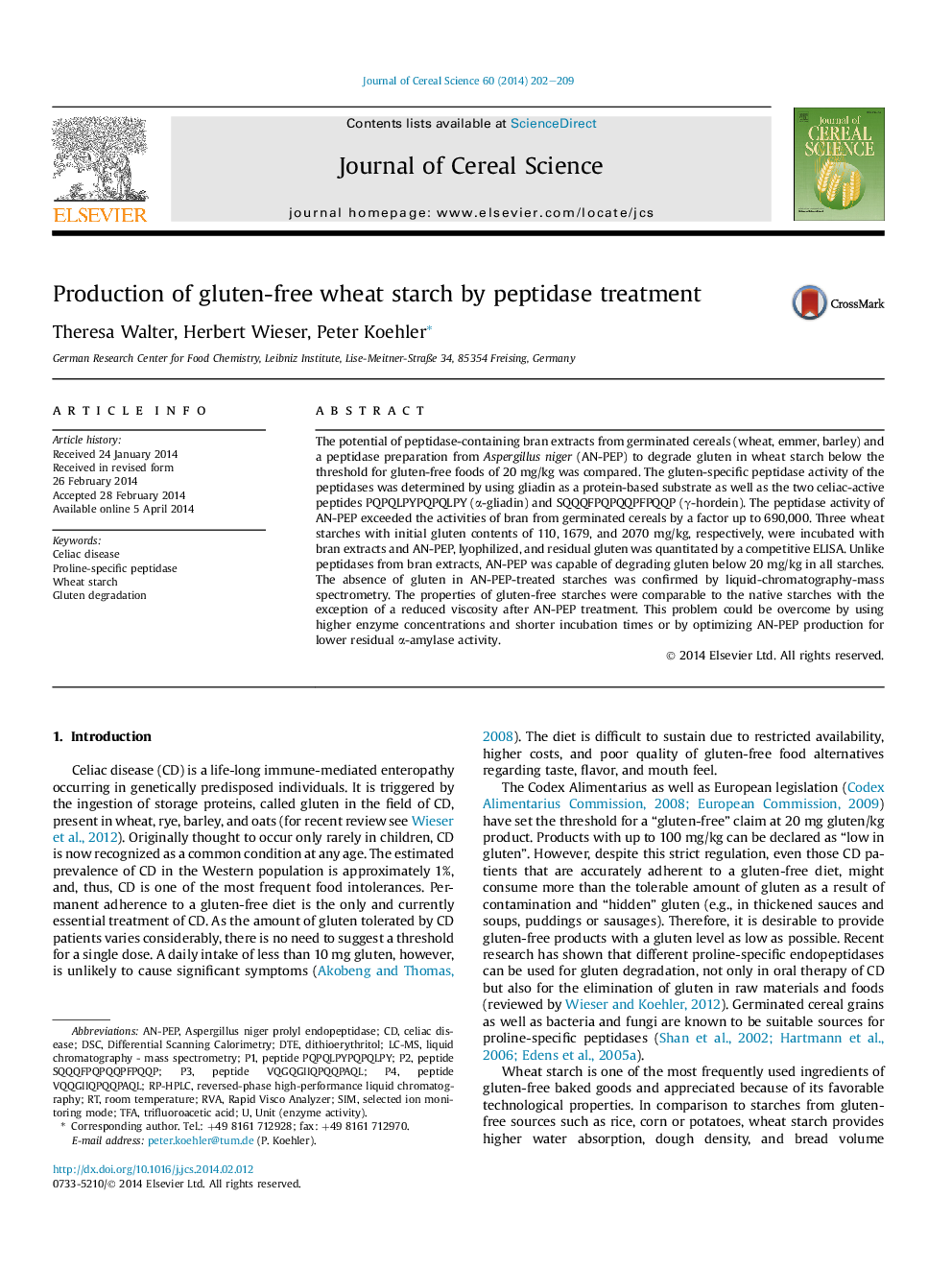| Article ID | Journal | Published Year | Pages | File Type |
|---|---|---|---|---|
| 4515806 | Journal of Cereal Science | 2014 | 8 Pages |
•Wheat starch can be rendered gluten-free by peptidase treatment.•Most of the technological properties are maintained.•AN-PEP is capable of degrading high initial gluten concentrations.•The use of AN-PEP in industrial wheat starch production seems feasible.
The potential of peptidase-containing bran extracts from germinated cereals (wheat, emmer, barley) and a peptidase preparation from Aspergillus niger (AN-PEP) to degrade gluten in wheat starch below the threshold for gluten-free foods of 20 mg/kg was compared. The gluten-specific peptidase activity of the peptidases was determined by using gliadin as a protein-based substrate as well as the two celiac-active peptides PQPQLPYPQPQLPY (α-gliadin) and SQQQFPQPQQPFPQQP (γ-hordein). The peptidase activity of AN-PEP exceeded the activities of bran from germinated cereals by a factor up to 690,000. Three wheat starches with initial gluten contents of 110, 1679, and 2070 mg/kg, respectively, were incubated with bran extracts and AN-PEP, lyophilized, and residual gluten was quantitated by a competitive ELISA. Unlike peptidases from bran extracts, AN-PEP was capable of degrading gluten below 20 mg/kg in all starches. The absence of gluten in AN-PEP-treated starches was confirmed by liquid-chromatography-mass spectrometry. The properties of gluten-free starches were comparable to the native starches with the exception of a reduced viscosity after AN-PEP treatment. This problem could be overcome by using higher enzyme concentrations and shorter incubation times or by optimizing AN-PEP production for lower residual α-amylase activity.
